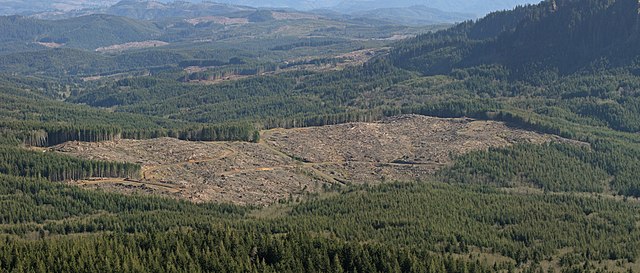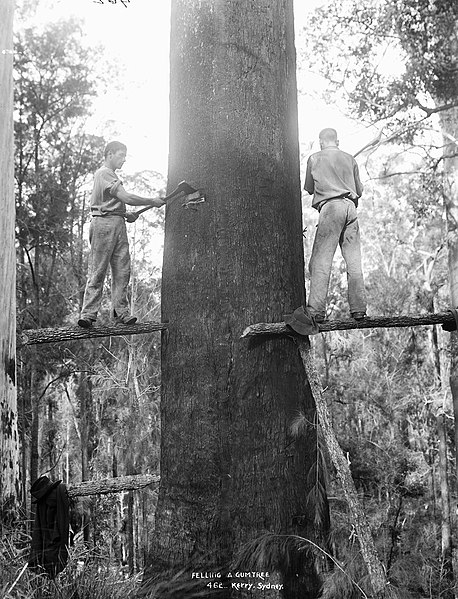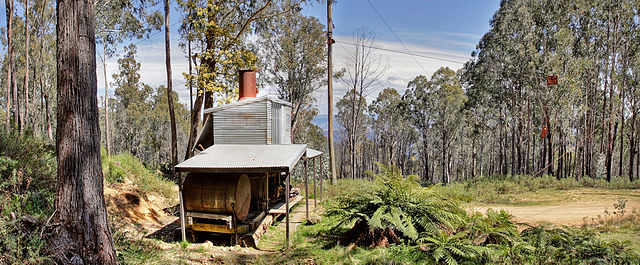Clearcutting, clearfelling or clearcut logging is a forestry/logging practice in which most or all trees in an area are uniformly cut down. Along with shelterwood and seed tree harvests, it is used by foresters to create certain types of forest ecosystems and to promote select species that require an abundance of sunlight or grow in large, even-age stands. Logging companies and forest-worker unions in some countries support the practice for scientific, safety and economic reasons, while detractors consider it a form of deforestation that destroys natural habitats and contributes to climate change. Environmentalists, traditional owners, local residents and others have regularly campaigned against clearcutting, including through the use of blockades and nonviolent direct action.
After a century of clearcutting, this forest, near the source of the Lewis and Clark River in Clatsop County, Oregon, is a patchwork. In each patch, most of the trees are the same age.
Clearcut logging in the Blue Ridge Mountains (Tennessee) in 1936
Clearcutting in Southern Finland
Clearcutting near Eugene, Oregon
Logging is the process of cutting, processing, and moving trees to a location for transport. It may include skidding, on-site processing, and loading of trees or logs onto trucks or skeleton cars. In forestry, the term logging is sometimes used narrowly to describe the logistics of moving wood from the stump to somewhere outside the forest, usually a sawmill or a lumber yard. In common usage, however, the term may cover a range of forestry or silviculture activities.
A Eucalyptus (Eucalyptus) being felled using springboards, c. 1884–1917, Australia
McGiffert Log Loader in East Texas, US, c. 1907
Lumber under snow in Montgomery, Colorado, 1880s
The Washington Iron Works Skidder in Nuniong is the only one of its kind in Australia, with donkey engine, spars, and cables still rigged for work.








